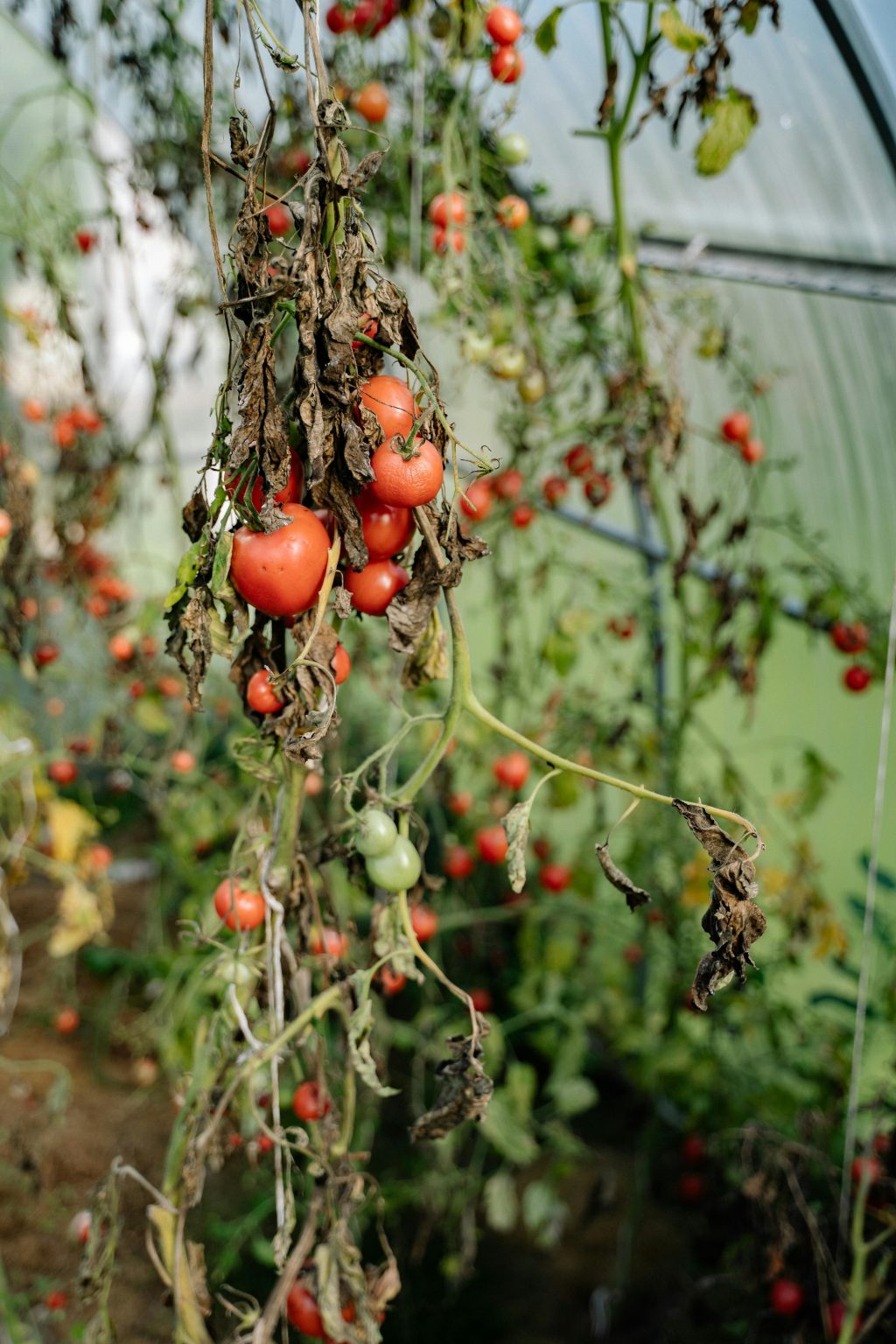“Talking Plants”

Image from Pexels: Tomatoes Growing in a Greenhouse Creative Commons License.
By Scott Hamilton
I remember reading an article a few years ago about trees emitting electrical signals through their roots to warn neighboring trees of danger. The signal would propagate through an entire forest and warn trees of dangers such as high winds and forest fires. I can remember being fascinated by the study that claimed trees talked with one another by way of these signals. The trees on the edge of a fire zone would start pulling more ground water into their trunks, limbs and leaves. The extra water protected the trees from the flames. At the time I never really imagined that plants could communicate with each other, much less with animals. However a recent study from Tel Aviv University makes exactly those claims.
The breakthrough study published July 15, 2025, reveals that tomato plants emit ultrasonic sounds when under stress. The main stress factor is dehydration, and the main receiver of this information turns out to be insects. These sounds, which are undetectable by the human ear, can be clearly heard by a large variety of insects. The researchers at Tel Aviv University set up a controlled experiment in their lab proving that insect behavior is altered by the sounds emitted from the plants.
In the experiment they utilized moths which lay their eggs on tomato plants, the same ones that result in the dreaded tomato worms. What they discovered was that the moths avoided plants that were in distress, but at first they could not figure out why. Did the moths use visual clues to the health of the plant? If so they were seeing signs of the plants’ stress levels that were undetectable? Eventually they discovered that the unhealthy plants were emitting an ultrasonic clicking sound. This led them to begin experimenting with the sounds.
Their next step was to put a sound generator near the healthy plants and they quickly discovered that the moths now avoided the healthy plants. In a second stage of the experiment they blocked the moth’s ability to hear and found that they now had no preference between healthy and stressed tomato plants. So where can this research lead and what are some of the next steps? The first thing they are looking into is if it is possible to protect tomato plants from the moths in a natural setting by artificially creating the ultrasonic stress signals. This would create a chemical-free insecticide.
Additional studies are planned in the coming years to determine if other species of animals and insects can detect these signals and actually react to them. For example, is it possible that bats utilize these signals to avoid the same plants while hunting for insects? Overall this research opens the door to a new study of the hidden layer of ecological communication between plants and insects. These new insights could reshape the fields of ecological theory and agricultural practices.
These studies could lead to new technologies in agriculture. Imagine for a moment that we could build detectors for these signals which would indicate when our crops are under stress and trigger watering and fertilizing systems to bring the plants back into a healthy state. Or generate fake signals that indicate plant stress to drive insects away from healthy plants.
I am always fascinated when we discover new ways of reading ecological data. The first time I read about similar studies was one done at Missouri University of Science and Technology where they took core samples from trees around chemical plants and used these core samples to prove the plants were illegally dumping chemical waste. In effect they found a way to utilize the trees as a natural sensor for chemical contamination.
It made me think if we were to study these plant stress signals in enough detail it might be possible to understand their language and determine the exact needs of the plant. We would be able to repeat prior studies and monitor signals from the plants to determine if it is possible to learn about soil conditions and plant health with direct communication. I used to dream of some day being able to communicate directly with animals, but it is now seeming more likely that we will develop technology that allows us to communicate with plants much sooner than we ever will for animals, after all it is a much simpler language to mimic, study and eventually understand. Until next week stay safe and learn something new.
Scott Hamilton is an Expert in Emerging Technologies at ATOS and can be reached with questions and comments via email to shamilton@techshepherd.org or through his website at https://www.techshepherd.org.






